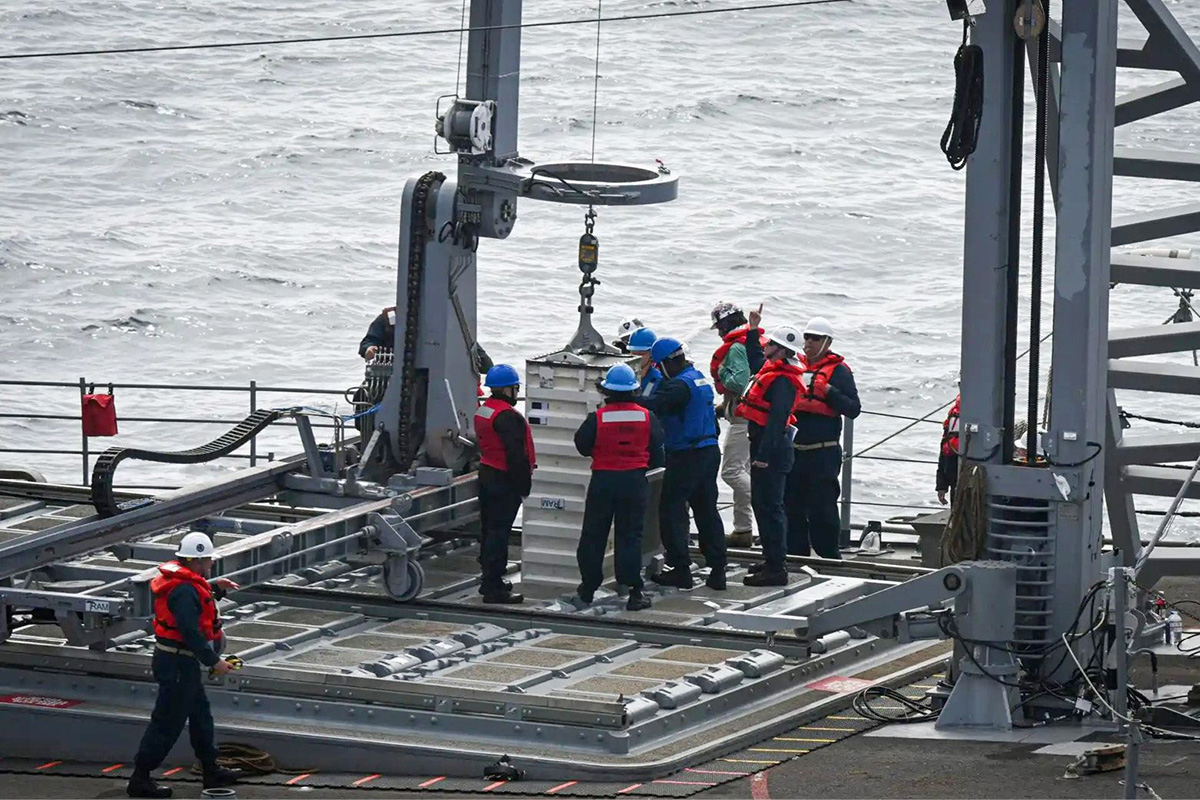Our Contribution
APL is addressing one of the Navy’s most persistent logistical challenges: reloading vertical launching systems (VLSs) at sea. Traditionally, Navy destroyers must return to port to reload their VLS with missiles, limiting their operational endurance in contested regions far from port. APL worked with the Naval Sea Systems Command (NAVSEA) Technology Office (SEA 05T) to revive the Transferrable Reload At-sea Method (TRAM)—a system originally designed at the Naval Surface Warfare Center, Port Hueneme Division, in the 1990s as a proof of concept for transferring missile canisters from supply ships to warships while at sea. This concept is known as connected replenishment (CONREP). In October 2024, the Navy successfully demonstrated the TRAM on an underway warship in open ocean for the first time. With APL engineers present, sailors aboard the Ticonderoga-class cruiser USS Chosin (CG 65) and the USNS Washington Chambers (T-AKE 11) demonstrated a transfer and reload evolution of empty missile canisters via CONREP and the TRAM. With the TRAM on board the USS Chosin, sailors were able to control, relocate, upright, strike-up, and strike-down missile canisters into VLS cells. The groundbreaking at-sea test followed a successful land-based demonstration, which was also supported by APL, in July 2024 at Naval Surface Warfare Center, Port Hueneme Division in California. APL is redesigning the TRAM to incorporate advanced manufacturing techniques and lessons learned from the demonstration to enable rapid deployment of the system throughout the fleet. APL is also conducting a comprehensive VLS reload study that will analyze multiple VLS reload techniques to maximize operational availability of VLS-equipped ships.

